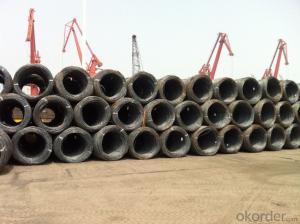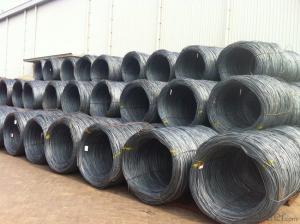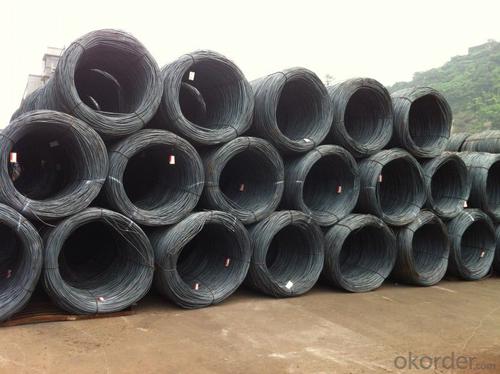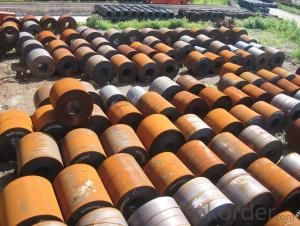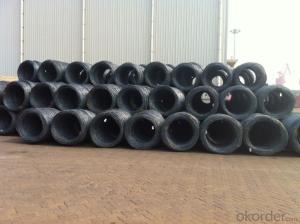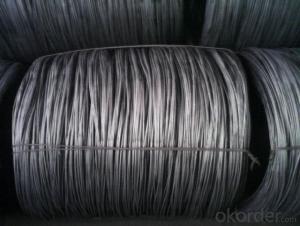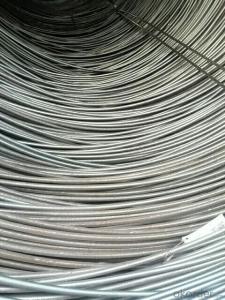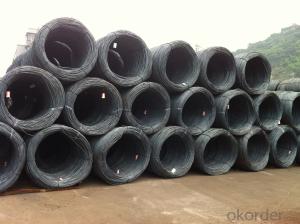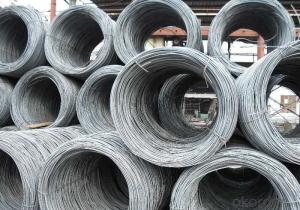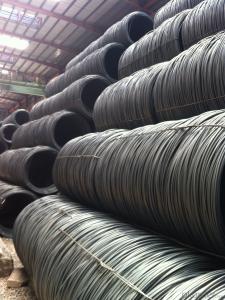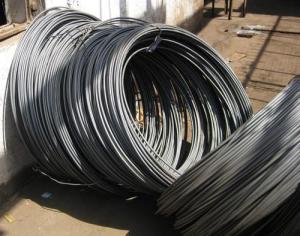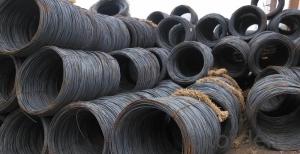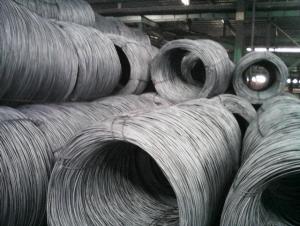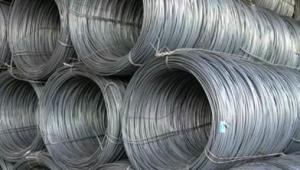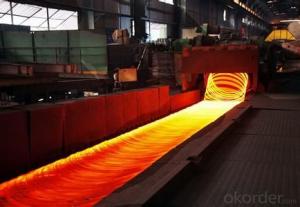Wire rod SAE 1006-1018 with lowest price
- Loading Port:
- Tianjin
- Payment Terms:
- TT OR LC
- Min Order Qty:
- 25 m.t.
- Supply Capability:
- 10000 m.t./month
OKorder Service Pledge
OKorder Financial Service
You Might Also Like
Product Description:
OKorder is offering high quality products at great prices with worldwide shipping. Our supplier is a world-class manufacturer of steel, with our products utilized the world over. OKorder annually supplies products to European, North American and Asian markets. We provide quotations within 24 hours of receiving an inquiry and guarantee competitive prices.
Product Applications:
After hot-rolled the products shaped into coil and delivery as finished product, including round, square, rectangular, hexagonal and so on, Since most of the products are round, it is generally called wire rod. Steel wire rod is widely used in construction and manufacturing. Steel wire rod is mainly used for reinforcement of reinforced concrete and welded structure or reprocessed (roberts, nail etc) materials, especially used to produce wire drawing, welding electrode, nails,spring, electronic, precise machinery parts and so on.
Product Advantages:
OKorder's wire rods are durable, strong, and resist corrosion.
Main Product Features:
· Premium quality
· Prompt delivery & seaworthy packing (30 days after receiving deposit)
· Corrosion resistance
· Can be recycled and reused
· Mill test certification
· Professional Service
· Competitive pricing
Product Specifications:
Manufacture: Hot rolled
Grade: SAE1006-1018
Certificates: ISO, SGS, BV, CIQ
Packaging: Export packing, nude packing, In Coils
Grade | Chemical Composition (%) | |||||
C | Mn | S | P | Si | B | |
SAE1006B | 0.03~O.07 | 0.32max | 0.045max | 0.040max | 0.30max | 0.0008min |
Mechanical properties | ||||||
Yield strength(N/mm2) | Tensile strength(N/mm2) | Elongation (%) | ||||
250-280 | 350-380 | ≥32 | ||||
Grade | Chemical Composition (%) | |||||
C | Mn | S | P | Si | B | |
SAE1008B | 0.10max | 0.3~0.50 | 0.050max | 0.040 max | 0.15max | 0.0008 min |
Mechanical properties | ||||||
Yield strength(N/mm2) | Tensile strength(N/mm2) | Elongation (%) | ||||
≥195 | 315-430 | ≥30 | ||||
FAQ:
Q1: Why buy Materials & Equipment from OKorder.com?
A1: All products offered byOKorder.com are carefully selected from China's most reliable manufacturing enterprises. Through its ISO certifications, OKorder.com adheres to the highest standards and a commitment to supply chain safety and customer satisfaction.
Q2: How do we guarantee the quality of our products?
A2: We have established an advanced quality management system which conducts strict quality tests at every step, from raw materials to the final product. At the same time, we provide extensive follow-up service assurances as required.
Q3: How soon can we receive the product after purchase?
A3: Within three days of placing an order, we will begin production. The specific shipping date is dependent upon international and government factors, but is typically 7 to 10 workdays.
Images:
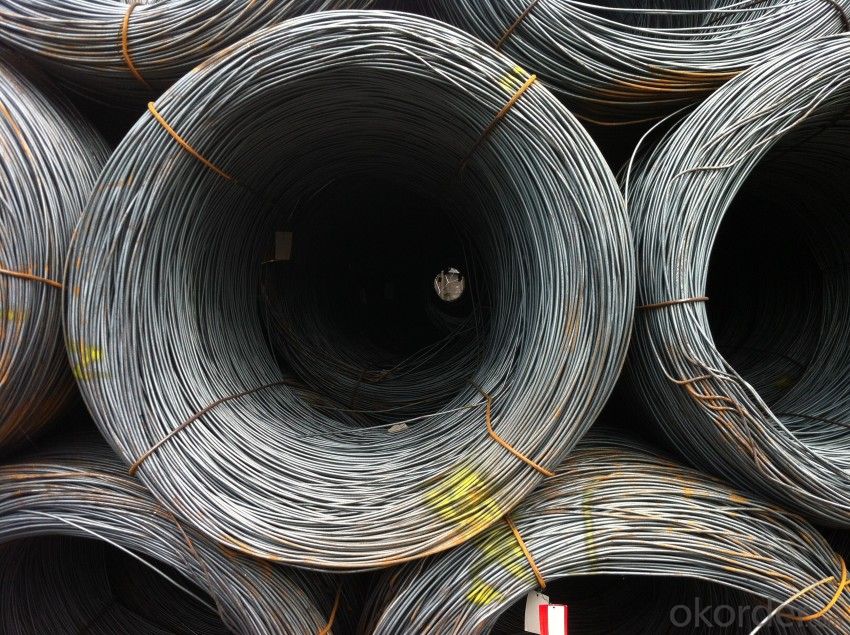

- Q: What are the main factors influencing the choice of steel wire rod price?
- The main factors influencing the choice of steel wire rod price include the cost of raw materials, such as iron ore and scrap metal, as well as the cost of production, including labor, energy, and transportation. Additionally, market demand and supply dynamics, global economic conditions, and government policies also play a significant role in determining the price of steel wire rod.
- Q: What are the common industry certifications for steel wire rod?
- Some common industry certifications for steel wire rod include ISO 9001:2015 for quality management systems, ISO 14001:2015 for environmental management systems, and OHSAS 18001:2007 for occupational health and safety management systems. Additionally, certifications such as ASTM A510/A510M-18, ASTM A370-20, and ASTM A510/A510M-18a may be relevant for specific applications and standards compliance within the steel wire rod industry.
- Q: How is steel wire rod used in the manufacturing of suspension components for automobiles?
- Steel wire rod is commonly used in the manufacturing of suspension components for automobiles due to its high strength and durability. It is typically formed and shaped into various suspension parts such as coil springs, stabilizer bars, and control arms. These components play a crucial role in providing stability, support, and smooth handling to the vehicle. The steel wire rod's properties allow it to withstand heavy loads and absorb shocks, making it an ideal material for suspension systems in automobiles.
- Q: What are the specifications for steel wire rod used in offshore wire strands?
- Industry standards and regulations typically determine the specifications for steel wire rod used in offshore wire strands, with the aim of ensuring the safety and reliability of these strands. Some of the main specifications for steel wire rod used in offshore wire strands are as follows: 1. Material Composition: High-quality carbon steel or alloy steel should be used for the steel wire rod. The material composition must meet specific requirements for strength, durability, and corrosion resistance. 2. Tensile Strength: The wire rod must have a high tensile strength to withstand the heavy loads and stresses encountered in offshore environments. The required tensile strength may vary depending on the particular application and project requirements. 3. Diameter and Tolerance: The wire rod must have a specific diameter and tolerance to ensure compatibility with the wire strand manufacturing process. The diameter and tolerance may vary depending on the wire strand design and application. 4. Surface Finish: The wire rod should have a smooth surface finish to facilitate proper adhesion and bonding with surrounding materials such as resin or protective coatings. The surface finish should also be free from defects such as cracks or scratches that could compromise the performance of the wire strand. 5. Corrosion Resistance: Offshore environments are exposed to harsh conditions including saltwater, moisture, and corrosive elements. Therefore, the steel wire rod used in offshore wire strands must possess excellent corrosion resistance properties to prevent degradation and maintain structural integrity over time. 6. Certified Testing and Quality Control: The wire rod must undergo rigorous testing and quality control procedures to ensure compliance with industry standards and specifications. This may involve testing for mechanical properties, chemical composition, surface finish, and corrosion resistance. It is important to note that the specific specifications for steel wire rod used in offshore wire strands may vary depending on project requirements, industry standards, and local regulations. Consequently, consulting the relevant codes and standards applicable to the specific offshore application is crucial for determining the exact specifications for the wire rod.
- Q: What are the different weldability testing methods for steel wire rod?
- There are several different weldability testing methods for steel wire rod. These include the macroscopic examination, which involves visually inspecting the weld for any defects or anomalies; the bend test, where the weld is bent to evaluate its ductility and resistance to cracking; the tensile test, which measures the strength and elongation of the weld; the hardness test, which determines the hardness of the weld and its susceptibility to cracking; and the impact test, which assesses the weld's ability to withstand sudden loads and impacts.
- Q: How is the surface roughness of steel wire rod controlled during manufacturing?
- The surface roughness of steel wire rod is controlled during manufacturing through various processes such as cleaning, descaling, and polishing. These processes remove any impurities, scale, or oxide layers from the surface, resulting in a smoother and more uniform finish. Additionally, the use of specialized rolling mills and techniques helps in achieving the desired surface roughness by controlling the pressure and speed of the rolling process.
- Q: What are the advantages of using steel wire rod in aerospace applications?
- The advantages of using steel wire rod in aerospace applications are its high strength, durability, and resistance to corrosion. Steel wire rod provides structural support and can withstand extreme conditions, making it suitable for critical aerospace components. Additionally, its versatility allows for different shapes and sizes to be produced, meeting specific design requirements.
- Q: How is steel wire rod used in the manufacturing of wire rope chains?
- Steel wire rod is the raw material that is used to manufacture wire rope chains. It is first drawn through a series of dies to reduce its diameter and increase its tensile strength. The resulting wire is then twisted and braided together to form the strands of the wire rope chain. This process ensures that the wire rope chain is strong, durable, and able to withstand heavy loads and harsh conditions.
- Q: What are the main growth drivers for the steel wire rod market?
- The main growth drivers for the steel wire rod market include increasing infrastructure development projects, growing automotive and manufacturing industries, and rising demand for construction materials. Additionally, the need for steel wire rod in various sectors such as aerospace, energy, and consumer goods further contributes to its market growth.
- Q: What are the safety precautions for handling steel wire rod?
- Some safety precautions for handling steel wire rod include wearing appropriate personal protective equipment (PPE) such as gloves, safety glasses, and steel-toed boots to protect against cuts and injuries. It is important to handle the wire rod carefully to avoid sharp edges or protruding ends. Using lifting equipment and proper lifting techniques can help prevent strain or back injuries. Additionally, ensuring a clean and organized work area can minimize tripping hazards. Regular inspections of the wire rod for any defects or damage should also be conducted to prevent accidents.
Send your message to us
Wire rod SAE 1006-1018 with lowest price
- Loading Port:
- Tianjin
- Payment Terms:
- TT OR LC
- Min Order Qty:
- 25 m.t.
- Supply Capability:
- 10000 m.t./month
OKorder Service Pledge
OKorder Financial Service
Similar products
Hot products
Hot Searches
Related keywords

